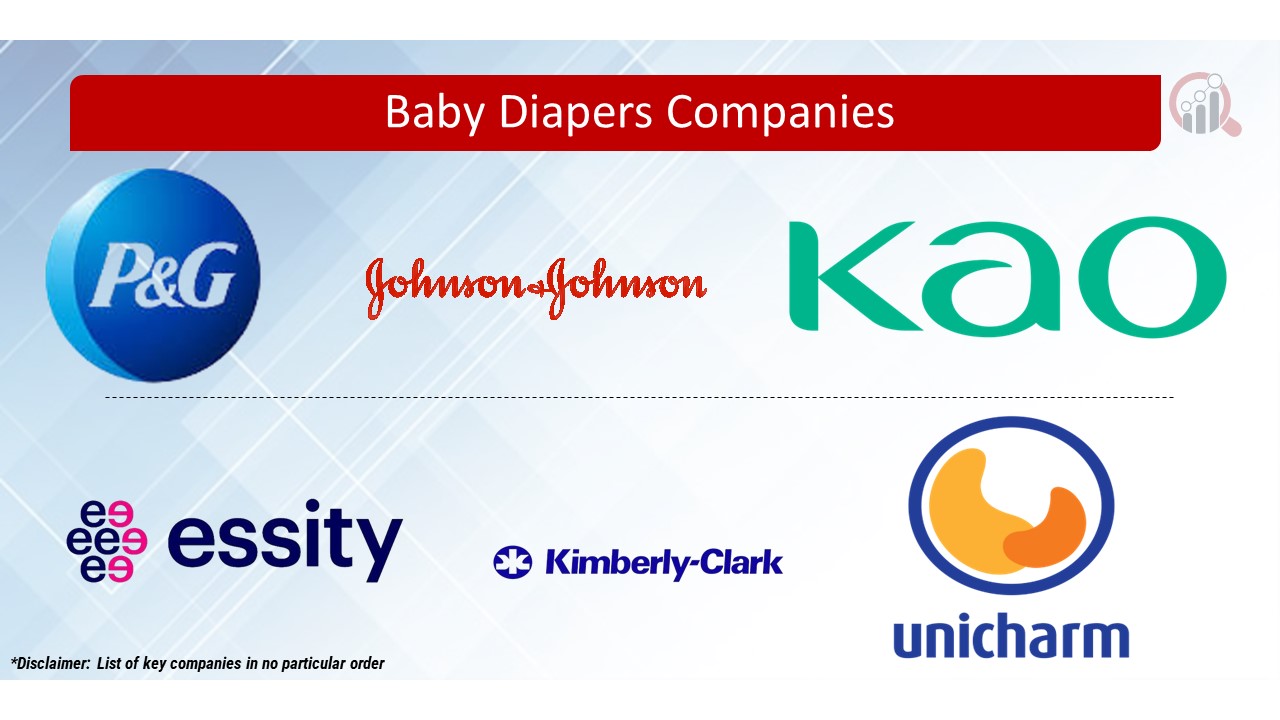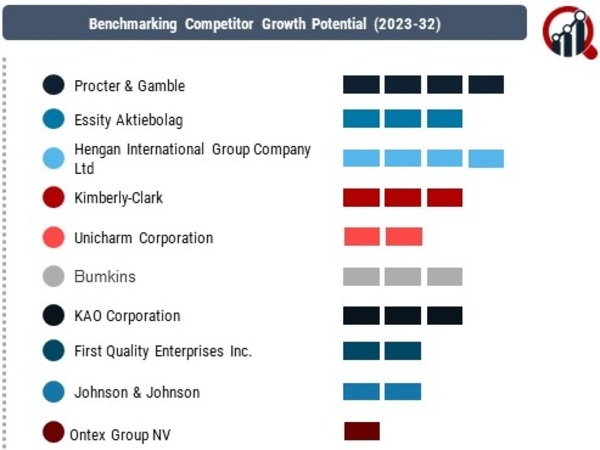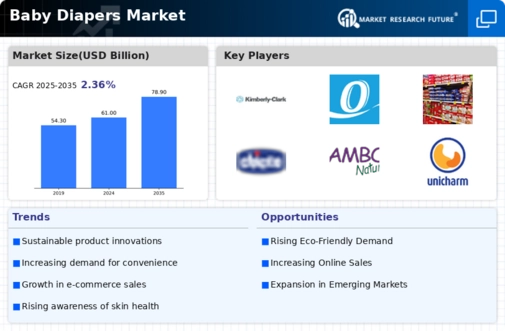Top Industry Leaders in the Baby Diapers Market Outlook

Market share analysis within the baby diapers segment hinges on several key factors. Brand reputation, product quality, and the ability to offer diapers catering to different age groups and specific needs significantly influence consumer preferences, impacting market share. Pricing strategies also play a pivotal role, with companies providing a spectrum of products at varying price points to address diverse consumer segments. The establishment of strong partnerships with retailers, both online and offline, is crucial for market share, ensuring widespread product accessibility and visibility.
While established players dominate the baby diapers market, new and emerging companies are entering the scene with innovative offerings. These entrants often focus on eco-friendly materials, advanced absorption technologies, and novel designs to carve a niche for themselves. The agility of these emerging companies allows them to quickly adapt to changing consumer demands, challenging the market dominance of established brands and contributing to the overall diversity of the market.
Industry news within the baby diapers market frequently underscores the dynamic nature of the sector, with constant product innovations, partnerships, and regulatory developments. Companies regularly introduce new diaper designs, incorporating features such as enhanced absorbency and eco-friendly materials. Collaborations with healthcare professionals and pediatricians are common to reinforce product credibility. Regulatory updates related to safety standards and environmental concerns impact industry dynamics, prompting companies to adjust their formulations and practices to comply with evolving requirements.
Current trends in company investments within the baby diapers market reveal a significant emphasis on research and development. Companies allocate resources toward developing diapers with improved functionality, enhanced comfort, and sustainability features. Strategic marketing initiatives, including digital advertising and collaborations with parenting influencers, are employed to strengthen brand visibility and resonate with the target consumer demographic. Investments in sustainable and eco-friendly diaper materials align with the growing demand for environmentally conscious products in the market.
The overall competitive scenario in the baby diapers market remains dynamic, with companies navigating shifting consumer preferences and regulatory landscapes. Established players face the challenge of maintaining trust and relevance in a market where emerging companies are capitalizing on sustainability and advanced technologies. The competition is expected to intensify as new entrants gain recognition, introducing innovative features and challenging the market share of established brands. In this environment, adaptability, responsiveness to consumer demands, and a commitment to sustainability will be crucial for companies to maintain and enhance their competitive positions in the baby diapers market.
Industry News and Investment Landscape:
- Recent purchases suggest market consolidation patterns, such as Kimberly-Clark's acquisition of Sofidel.
- Raising research and development costs to focus on smart technology, environmentally friendly materials, and customizable features is a sign of a future-oriented approach.
- Government policies that support environmental awareness and biodegradability are having an impact on marketing plans and product development.
Key Companies in the Baby Diapers Market include –
- Procter & Gamble
- Essity Aktiebolag
- Hengan International Group Company Ltd
- Kimberly-Clark
- Unicharm Corporation
- Bumkins
- KAO Corporation
- First Quality Enterprises Inc.
- Domtar Corporation
- Ontex Group NV
- Johnson & Johnson










